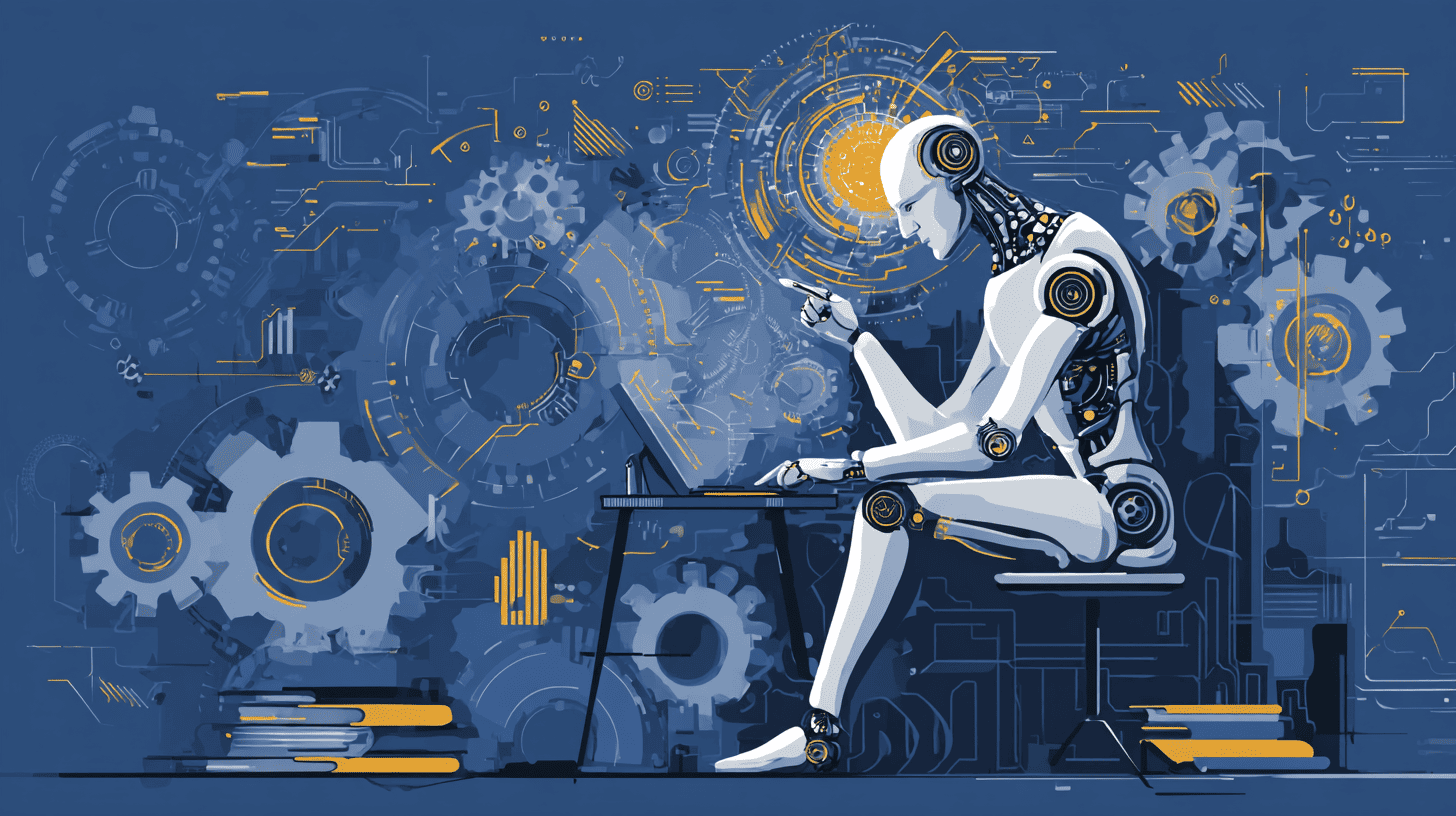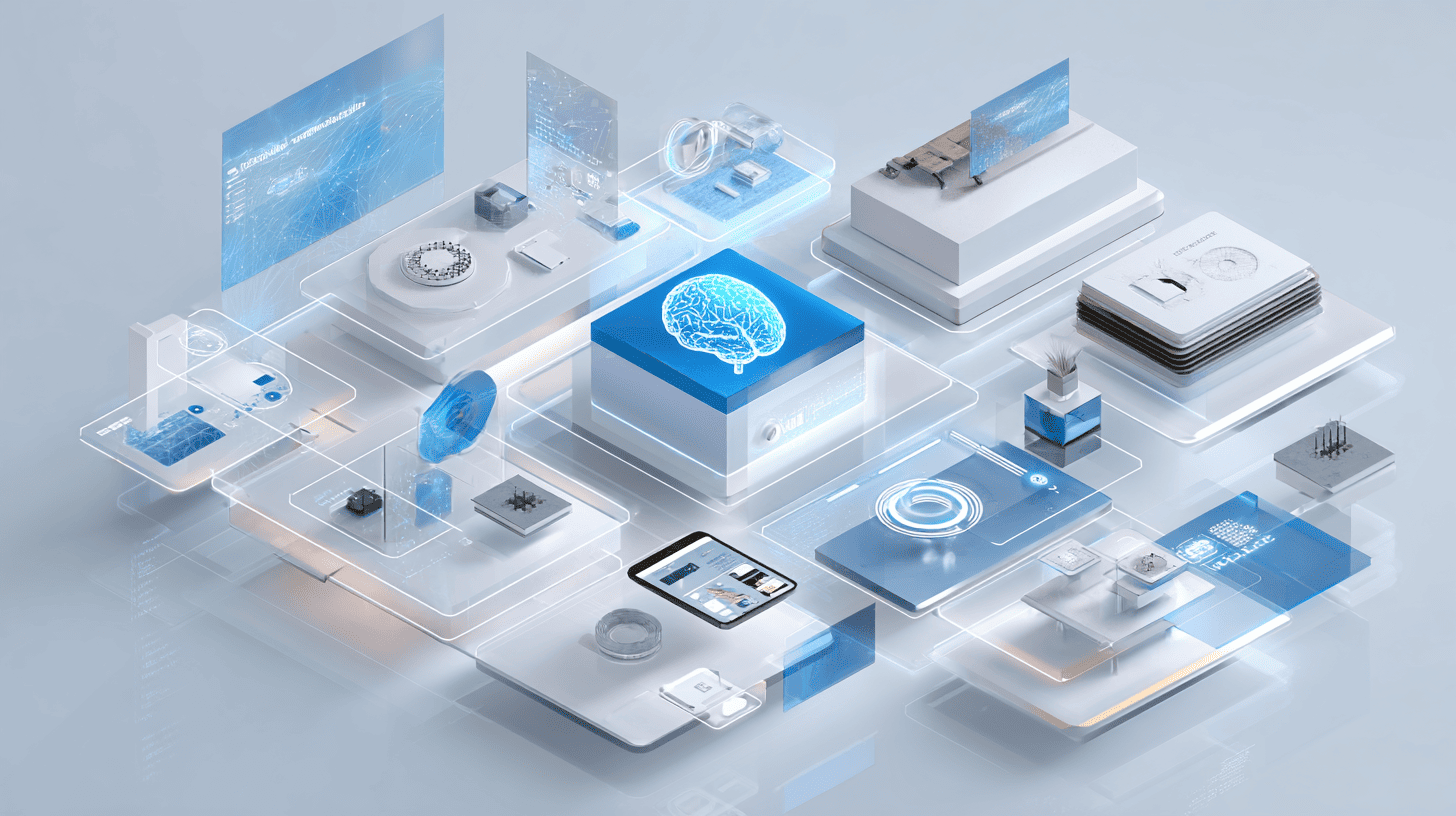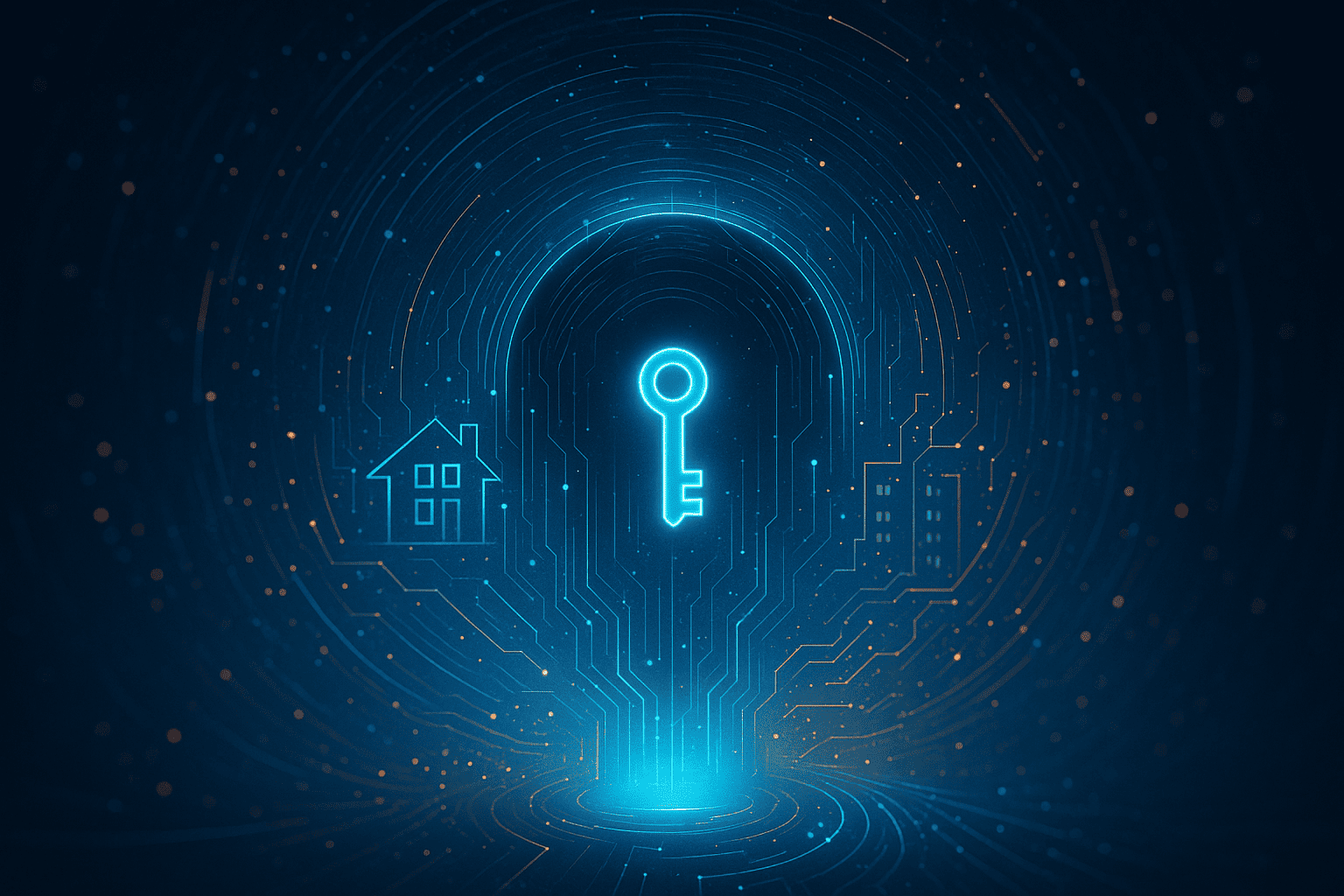AI-Powered Product Discovery for Enterprises: 2025 Implementation Guide
Alexander Stasiak
Oct 17, 2025・15 min read
Table of Content
What is AI-powered product discovery for enterprises
Why traditional product discovery falls short
The AI advantage for modern enterprises
Key steps to implement AI product discovery
1. Establish clear objectives
2. Assess technical infrastructure
3. Integrate data sources and tools
4. Train teams and pilot the solution
5. Measure and optimize continuously
Overcoming security and compliance concerns
Selecting the right AI tool and partner
1. Evaluate technical capabilities
2. Assess integration and scalability
3. Review industry expertise
4. Check support and ongoing maintenance
Future trends in AI product discovery
Empowering enterprise growth with AI product discovery
FAQs about AI-powered product discovery for enterprises
What is the ROI of implementing AI product discovery for enterprises?
How long does AI product discovery implementation typically take for enterprises?
What types of data do enterprises need for effective AI product discovery?
How does AI product discovery integrate with existing enterprise systems?
What skills do enterprise teams need to manage AI product discovery tools?
Transform Your Product Discovery with AI
Gain faster insights, reduce risk, and accelerate innovation.👇
Product discovery used to take months of research, countless meetings, and still resulted in launches that missed the mark. Enterprises invested heavily in traditional methods—focus groups, surveys, manual data analysis—only to watch competitors who moved faster capture market opportunities first.
AI-powered product discovery changes this equation by analyzing millions of customer data points, identifying patterns humans miss, and predicting which product opportunities will succeed before you invest development resources. This guide walks you through what AI product discovery actually does for enterprises, why traditional methods create bottlenecks, how to implement AI solutions step-by-step, and what trends are reshaping product development in 2025.
What is AI-powered product discovery for enterprises

AI-powered product discovery for enterprises uses artificial intelligence to automate how companies understand customer needs, identify product opportunities, and personalize the customer experience. The technology analyzes vast amounts of data from user feedback, support tickets, behavioral analytics, and market trends to uncover patterns that manual analysis typically misses. Instead of spending weeks combing through spreadsheets and survey responses, AI synthesizes information from multiple sources and creates comprehensive reports highlighting key themes and opportunities.
Think of it as having a tireless analyst who never sleeps, processes millions of data points in hours, and spots connections your team might overlook. Machine learning enables these systems to learn from data and improve recommendations over time, while natural language processing (NLP) analyzes unstructured data like customer reviews and support conversations. Predictive analytics forecasts future trends and customer demands by examining market movements, social media sentiment, and historical sales patterns.
The business outcomes are straightforward. Enterprises implementing AI product discovery see increased conversion rates as products better match customer needs, improved customer experiences through personalization, and higher ROI by reducing the risk of building products nobody wants. This technology integrates at the ideation, validation, and prioritization stages of product development, transforming what was once a time-consuming manual process into a quick, effective system.
Core AI Capabilities:
- Pattern Recognition: Identifies hidden trends across massive datasets that human analysts would take months to uncover
- Automated Synthesis: Pulls insights from disparate sources into actionable reports
- Personalized Recommendations: Analyzes browsing history and purchase data to suggest products with higher conversion probability
- Intelligent Search: Uses conversational AI to understand user intent even when customers don't know exact keywords
Why traditional product discovery falls short
Traditional product discovery methods create significant bottlenecks for enterprises trying to stay competitive. Manual research processes consume weeks or months of team time, while human bias inevitably colors data interpretation. You end up building products that reflect internal assumptions rather than market reality.
The inability to process large datasets effectively means enterprises miss critical signals buried in customer feedback, support tickets, and behavioral data. Your team might successfully research one product opportunity, but when facing dozens of potential initiatives, the manual approach breaks down completely. Meanwhile, markets shift, competitors launch, and customer needs evolve while your team is still compiling spreadsheets from last quarter's research.
| Traditional Discovery | AI-Powered Discovery |
| Manual data analysis taking weeks | Automated pattern recognition in hours |
| Limited to small data samples | Processes millions of data points |
| Subject to confirmation bias | Data-driven objectivity |
| Reactive to market changes | Predictive of emerging trends |
| Difficult to scale across portfolios | Scales effortlessly enterprise-wide |
The competitive disadvantage compounds over time. While your enterprise spends months validating a single product idea through traditional methods, competitors using AI discovery are testing, iterating, and launching multiple initiatives. This speed gap doesn't just affect time-to-market—it fundamentally changes who defines the market and who follows.
The AI advantage for modern enterprises

AI product discovery accelerates innovation by shortening discovery cycles from months to weeks or even days. This speed advantage enables faster product launches without sacrificing quality or customer insight. Enterprises can test more hypotheses, validate more ideas, and bring winning products to market while competitors are still conducting focus groups.
Risk reduction represents another substantial benefit. AI identifies potential issues before development begins by analyzing similar product launches, customer sentiment patterns, and market conditions. This early warning system prevents failed launches that drain resources and damage brand reputation.
Customer-centricity becomes embedded in the process rather than an aspiration. AI ensures products meet actual customer needs by continuously analyzing real behavior, feedback, and preferences rather than relying on what customers say they want in surveys. The technology also provides competitive intelligence by tracking market trends and competitor moves in real-time, allowing enterprises to identify opportunities or defensive moves before competitors gain traction.
Strategic Benefits:
- Revenue Growth: Better-targeted products that address validated market needs
- Faster Time-to-Market: First-mover advantages in emerging categories
- Personalized Experiences: Increased loyalty and lifetime value
- Data-Driven Decisions: Reduced executive disagreements and political gridlock
Key steps to implement AI product discovery

1. Establish clear objectives
Start by setting measurable goals for your AI implementation. Vague aspirations like "better insights" won't guide your investment or help you measure success. Specific targets might include increasing conversion rates by 15%, reducing time-to-market by 30%, or validating 50% more product ideas per quarter with the same team size.
Define KPIs that align with your business model and strategic priorities. A B2B enterprise might track metrics like number of validated product ideas per quarter, customer satisfaction scores, or percentage of launches that hit revenue targets. Consumer-focused enterprises might emphasize conversion rate improvements, personalization effectiveness scores, or reduction in product returns due to better market fit.
2. Assess technical infrastructure
Evaluate your current systems, data sources, and technical capabilities before selecting AI tools. Many enterprises discover they have data quality issues—incomplete records, inconsistent formats, or siloed information—that would undermine AI effectiveness. Addressing these foundational problems first prevents disappointing results and wasted investment.
Your infrastructure assessment determines whether you're ready for AI implementation or need preliminary work. Check data storage capacity, processing power for AI workloads, and integration points between existing systems. Enterprises with modern cloud infrastructure and well-organized data lakes typically implement faster than those running legacy systems with fragmented data sources.
3. Integrate data sources and tools
Connect your existing enterprise systems—CRM, ERP, analytics platforms, support ticketing, and e-commerce systems—with your chosen AI tools. This integration enables the comprehensive analysis that makes AI product discovery valuable, pulling insights from every customer touchpoint rather than isolated data pockets.
Common integration challenges include data silos where departments control their own systems, incompatible formats between platforms, and security restrictions that prevent data sharing. Address these obstacles using middleware solutions, APIs, or data lakes that create a unified view without forcing you to replace existing systems. The integration phase typically takes 4-8 weeks for enterprises with moderate complexity.
4. Train teams and pilot the solution
Prepare your teams with training on AI concepts, tool functionality, and new workflows. Product managers, researchers, and analysts benefit from understanding both what AI can do and its limitations. Focus training on practical scenarios: how to interpret AI-generated insights, when to dig deeper into recommendations, and how to combine AI analysis with human judgment.
Run pilot programs testing AI product discovery in a controlled environment before full-scale rollout. Select one product line or business unit where you can measure results clearly and learn from challenges without enterprise-wide disruption. Successful pilots typically run 8-12 weeks, providing enough time to see measurable outcomes while maintaining team engagement and momentum.
5. Measure and optimize continuously
Establish feedback loops gathering user input and performance data from your AI implementation. Product teams provide qualitative feedback on insight quality and usefulness, while quantitative metrics track conversion improvements, time savings, and accuracy of predictions.
Iterate and refine your AI models and processes based on what you learn. Machine learning systems improve with more data and feedback, so the enterprises that actively optimize their implementations see compounding benefits over time. Schedule quarterly reviews examining which insights led to successful products, where AI recommendations missed the mark, and how you can enhance data inputs or model parameters for better results.
Overcoming security and compliance concerns

Data privacy, security, and regulatory compliance represent legitimate concerns that enterprises address thoughtfully when implementing AI discovery tools. GDPR in Europe, CCPA in California, and industry-specific regulations like HIPAA for healthcare or PCI-DSS for payment processing all impose requirements on how you collect, store, and analyze customer data.
Implement robust data governance practices ensuring data integrity, clear ownership, and accountability throughout the AI lifecycle. This includes documenting what data you collect, how AI systems use it, who has access, and how long you retain information. Transparency becomes particularly important—customers and regulators increasingly expect companies to explain how AI makes decisions that affect individuals.
Security Best Practices:
- Data Encryption: Protect sensitive information both at rest in storage and in transit between systems
- Access Controls: Limit who can view and use customer data based on role requirements and business need
- Audit Trails: Track how AI systems access and process information for compliance documentation
- Regular Security Assessments: Test your AI systems for vulnerabilities and update protections as threats evolve
Consider ethical AI principles beyond legal compliance. Algorithmic bias can creep into AI systems when training data reflects historical prejudices or when certain customer segments are underrepresented in your datasets. Regular audits checking for disparate outcomes across demographic groups help you catch and correct these issues before they damage customer relationships or create legal exposure.
Selecting the right AI tool and partner
1. Evaluate technical capabilities
Look for AI solutions offering advanced analytics that go beyond basic reporting to uncover non-obvious patterns and correlations. Integration options determine how easily the tool connects with your existing systems—pre-built connectors for major enterprise platforms save significant implementation time.
User-friendly interfaces matter more than enterprises often anticipate. Even powerful AI capabilities deliver limited value if product teams find the tools confusing or frustrating to use. Request demonstrations with actual team members who'll use the system daily, not just executives making purchasing decisions.
2. Assess integration and scalability
Ensure the solution works seamlessly with your existing technology stack rather than creating another isolated system. Ask vendors for customer references with similar technical environments—their implementation experiences provide realistic expectations for your own timeline and challenges.
Scalability considerations include both technical capacity and organizational scope. Can the system handle your data volume? Can it support multiple business units or geographies? The answers to these questions determine whether you're investing in a long-term solution or a temporary fix.
3. Review industry expertise
Choose partners with proven domain knowledge and experience in your specific industry. A tool designed for e-commerce might not translate well to B2B SaaS or manufacturing contexts—the customer journey, data sources, and decision factors differ substantially.
At Startup House, we've helped enterprises across industries implement AI product discovery solutions tailored to their unique challenges. Our team combines deep technical expertise with practical understanding of how different sectors approach product development, ensuring your implementation delivers real business value rather than just impressive technology demos.
4. Check support and ongoing maintenance
Expect comprehensive onboarding, training, and ongoing support from solution providers. AI implementations require continuous optimization as your business evolves, markets shift, and you gather more data.
Evaluate the vendor's update cadence and innovation roadmap. AI technology advances rapidly—partners who continuously enhance their platforms with new capabilities provide better long-term value than those with static offerings.
Future trends in AI product discovery
Generative AI is transforming product discovery from analysis to creation. Rather than just identifying opportunities, emerging tools help enterprises design product concepts, generate feature specifications, and even create prototype interfaces based on customer insights. This evolution from "what customers want" to "here's what it could look like" accelerates the entire product development cycle.
Predictive analytics continues evolving toward greater accuracy and longer forecasting horizons. Early AI tools predicted next quarter's trends; newer systems forecast 12-18 months ahead by analyzing leading indicators, weak signals, and complex interdependencies that human analysts struggle to track.
The democratization of AI tools makes sophisticated product discovery accessible across organizations rather than concentrated in specialized teams. Low-code and no-code AI platforms enable product managers, marketers, and business analysts to run their own discovery analyses without depending on data science resources. This democratization accelerates insight generation but requires governance frameworks ensuring consistency and quality across decentralized efforts.
Emerging Technology Integration:
- IoT Connectivity: Product usage data from connected devices provides real-time insight into customer behavior
- AI agents:
- Edge Computing: Processes customer data closer to the source for faster, more privacy-conscious insights
Ethical AI and responsible innovation gain prominence as both regulatory pressure and consumer expectations increase. Enterprises implementing AI product discovery increasingly focus on fairness, transparency, and accountability—not just as compliance requirements but as competitive differentiators.
Empowering enterprise growth with AI product discovery

Enterprises adopting AI product discovery early gain significant competitive advantages that compound over time. First movers establish data feedback loops that continuously improve their insights while competitors still rely on traditional methods. This creates a widening capability gap—your product decisions get smarter with each cycle while others remain stuck in manual processes.
The long-term ROI extends beyond immediate product successes to organizational transformation. Teams develop data-driven decision-making cultures, reduce time wasted on political debates about product direction, and build confidence in their market understanding.
You don't need to transform everything overnight. Start with pilot projects in one product line or business unit, prove the value with measurable results, then scale across your enterprise. This incremental approach reduces risk, builds organizational buy-in, and allows you to refine your implementation based on real experience.
Ready to transform your product discovery process with AI? Get a proposal tailored to your enterprise's specific needs, challenges, and goals.
FAQs about AI-powered product discovery for enterprises
What is the ROI of implementing AI product discovery for enterprises?
Enterprises typically see ROI through both cost savings and revenue growth. Cost reductions come from decreased research expenses, fewer failed product launches, and more efficient use of product team time. Revenue improvements stem from higher conversion rates on new products, faster time-to-market capturing more opportunity value, and better product-market fit increasing customer lifetime value.
How long does AI product discovery implementation typically take for enterprises?
Implementation timelines vary based on technical readiness and organizational complexity, but most enterprises move from decision to full deployment within 3-9 months. Organizations with modern cloud infrastructure, clean data, and strong executive sponsorship often complete implementations in 3-4 months. Those requiring data cleanup, legacy system integration, or extensive change management might need 6-9 months.
What types of data do enterprises need for effective AI product discovery?
Essential data sources include customer behavior data showing how users interact with current products, market research revealing competitor activities and industry trends, sales data indicating which offerings succeed or struggle, and product usage analytics tracking feature adoption and engagement patterns. Qualitative data from customer support tickets, reviews, and feedback surveys provides context that quantitative metrics alone miss.
How does AI product discovery integrate with existing enterprise systems?
AI discovery tools typically connect via APIs or middleware to your existing CRM, ERP, analytics platforms, and other enterprise systems. This integration enables seamless data flow without forcing you to replace working systems or manually export and import information. Modern AI platforms offer pre-built connectors for major enterprise software like Salesforce, SAP, Adobe Analytics, and Microsoft Dynamics.
What skills do enterprise teams need to manage AI product discovery tools?
Teams benefit from competencies in data analysis to interpret AI-generated insights and identify patterns worth investigating further. Basic AI and machine learning understanding helps team members grasp what the technology can and cannot do, preventing both over-reliance and unnecessary skepticism. Change management skills prove essential for driving adoption across the organization and helping colleagues adapt to new workflows.
Digital Transformation Strategy for Siemens Finance
Cloud-based platform for Siemens Financial Services in Poland


You may also like...

AI in Self Storage: Enhancing Efficiency and Boosting Profits
Discover how AI is transforming the self storage industry through automation, predictive analytics, and dynamic pricing.
Alexander Stasiak
Nov 13, 2025・12 min read

Natural language processing in finance
Most finance teams spend hours combing through reports, news, and data. Natural language processing (NLP) changes that by turning massive amounts of text into clear, actionable insights.
Alexander Stasiak
Oct 23, 2025・7 min read

The Role of AI in Healthcare: Simplifying Complex Processes
AI is reshaping the healthcare industry, making complex processes simpler and faster. From early disease detection to personalised treatments, discover how AI is driving efficiency and improving patient outcomes.
Alexander Stasiak
Oct 24, 2025・10 min read
Let’s build your next digital product — faster, safer, smarter.
Book a free consultationWork with a team trusted by top-tier companies.








